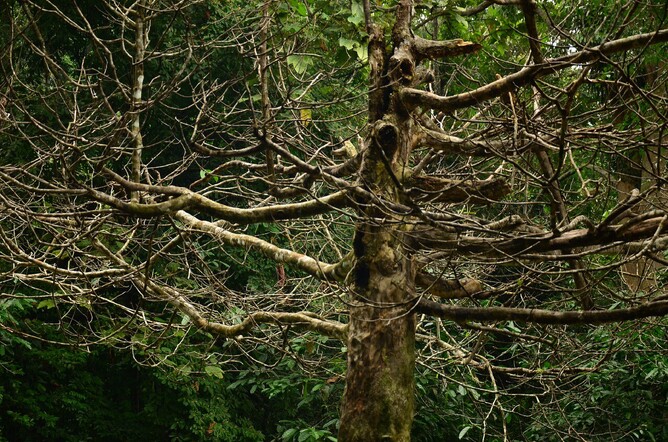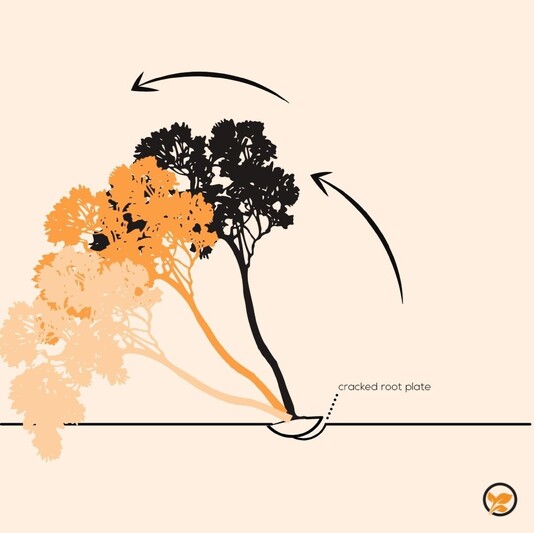Nature is beautiful and full of life. And, there’s nothing more rewarding than planting trees in your garden and seeing them grow over the years. Although, maintaining trees can be a hit and miss for many if you don’t plan and research them beforehand.
Summer is an excellent time to inspect your garden, especially trees. If they surround your home, you should be aware of their health for safety reasons. Tree damage is frequent but can be avoided. Although, how can you tell if a tree is dying?
Here’s a quick summary of the signs of a dying tree so you can avoid any injury or damages to your property.
Slime Flux
Have you ever noticed a slimy and smelly oozy substance coming out of your tree? This is the result of a bacterial infection called Wetwood or Slime Flux. Many factors can contribute to bacterial infection, such as improper pruning, inadequately cut branches, wildlife damage, or other environmental impacts. In addition, the oozing sap can kill other surrounding plants growing around the base of the infected tree.
Some trees can fight off the infection without too much damage. However, if the tree is young and living through harsh conditions, like drought, the disease can spread to the sapwood, the tree’s living layers of secondary wood. Once infected, the leaves will turn yellow, wilt, and die. You will then need to contact certified arborists to remove the deadwood.
To avoid slime flux in your green space, remember to water your trees properly, maintain the overall tree’s health and contact professional arborists to prune them when needed.
Bark Inclusion
What is a bark inclusion? It’s when a tree often grows with two or more trunks, also called co-dominant stems. Over time, some faults can develop, causing the trunks to collapse. For example, one of the main external faults that you can see is called included bark. It is a crack in the bark that will appear between the trunk.
When you find an included bark, it is most likely that the union will eventually split, and a branch will fall. This can become a hazard to your family and property. It is much easier to deal with this problem when the tree is young rather than waiting until it gets older.
There are many ways to prevent and manage the risk of tree split or branch falling:
Crown reduction pruning: helps remove stress from trees from too-heavy branches and reduces the chance of them breaking off in storms.
Cabling and bracing: installing cables to secure the limbs in place.
Tree removal: as a last resort.
If you identify a tree with an included bark, we advise you to contact a Certified Arborist to inspect the tree.
General Tree Decay Signs
General signs of tree decay also include:
Fruiting fungal bodies: like mushrooms growing on a tree’s bark.
Lousy pruning can result in diseases and spread throughout the tree.
Loose or missing bark: can be caused by animals, insects and diseases that have found a path under the bark, vehicles, and people damaging the exterior bark or severe weather.
Cracks in the trunk: tree’s response to internal disease.
Loss of foliage and discoloured leaves: if the tree isn’t producing any leaves and the leaves are turning yellow, this may be a sign of disease.
Deadwood
Deadwood is an area of a tree that has died because of damage or poor health. It’s either dry, breaks easily or doesn’t grow leaves. For example, it can result from harm from insects, animals or diseases. It can also be because of insect damage or lack of light.
Deadwooding is the process of pruning and removing dead branches from a tree’s canopy. This should be performed by a certified arborist with experience and knowledge to minimise damage.
Branch Cracks
Breaking branches appear because they have lost their strong limb or the trunk attached to them has been weakened or infected with a disease.
Here are some tips on how to keep trees strong and healthy to avoid breaking branches:
They need to be inspected every year to check for diseases and pests.
Pruning them from a young age will encourage strong structure.
Watering them regularly will prevent drought stress.
Some natural factors, like wind, storms, season changes, can affect the tree’s health.
All property owners should be vigilant and keep a close eye on their trees.
Cracked Root Plate
A cracked root plate isn’t a widespread problem but is intriguing. A tree’s root plate can break when its roots grow along the soil’s surface. Once the tree has matured, you might notice it leaning more one way than the other. We recommend contacting an arborist to prune it so it grows upwards correctly if that is the case.
Although, other times, you might notice a root crack around the tree. If this crack is overlooked, the roots can lift the tree’s base and eventually fall over. This can also be fixed if spotted on time.
All homeowners should get familiar with their trees and understand how they grow and maintain them.
We are more than happy to offer our knowledge and services if you have big trees surrounding your home. Learning about a tree’s health is essential as a property owner. It is always better to be prepared than pay for damages in the long run.
Contact us today for any questions or issues.



